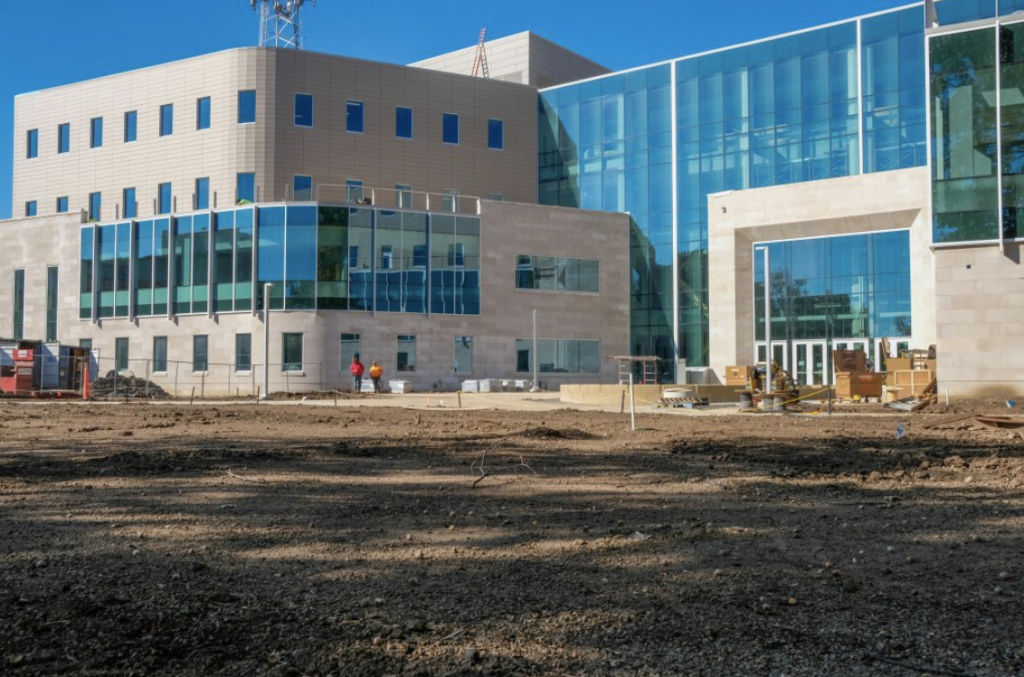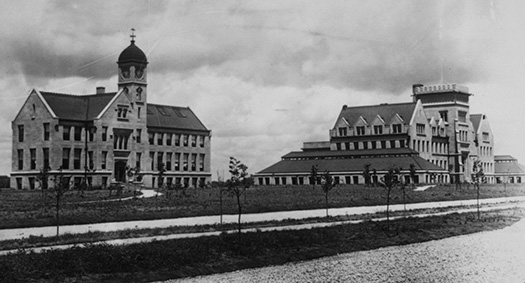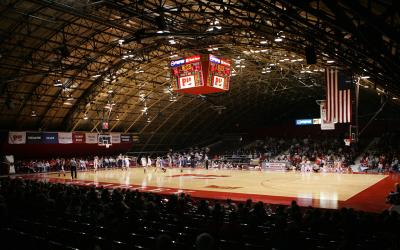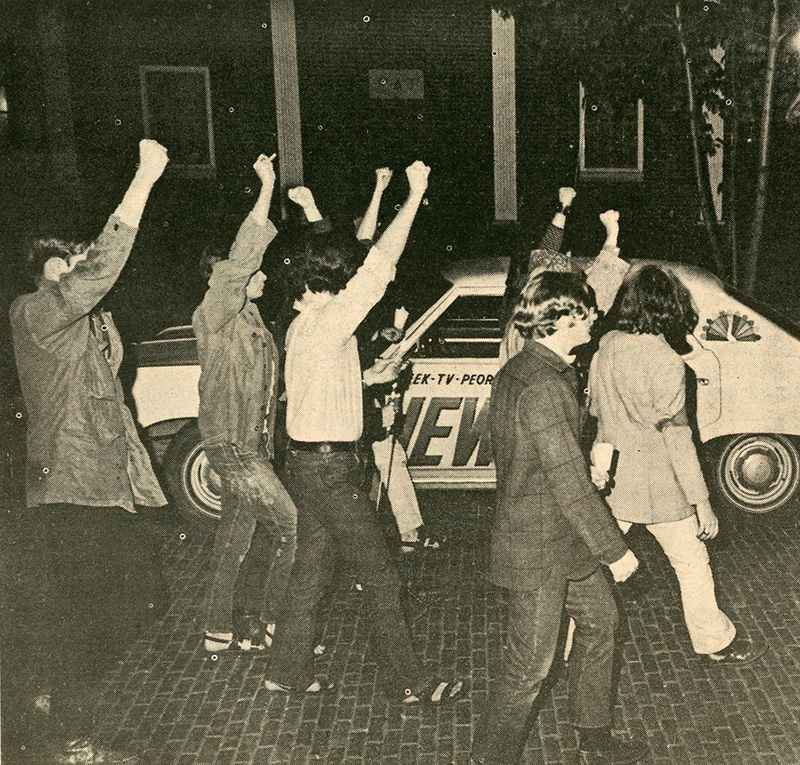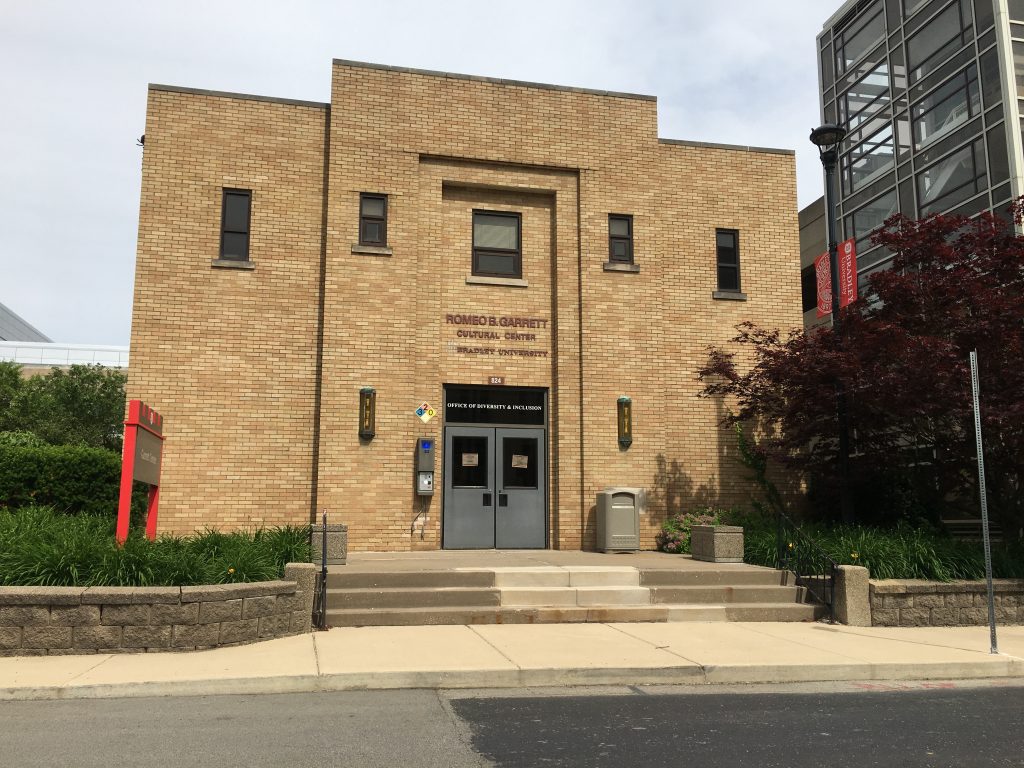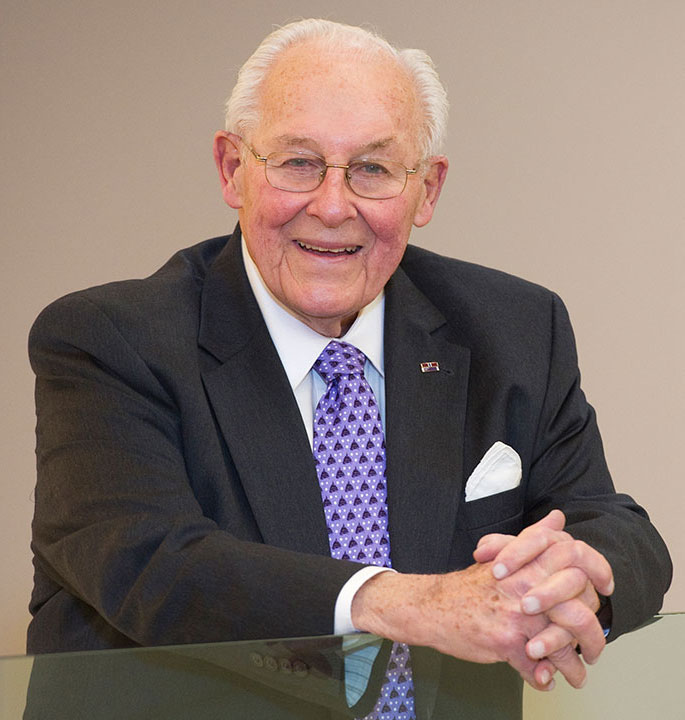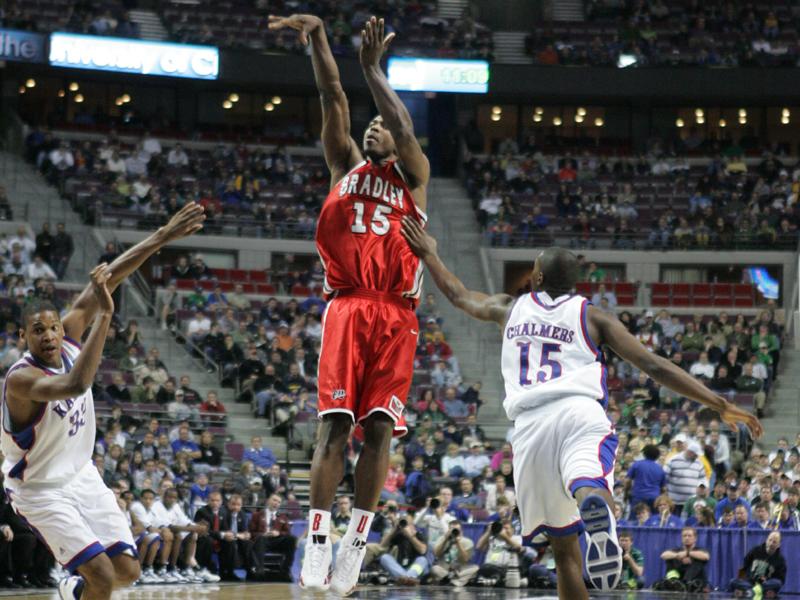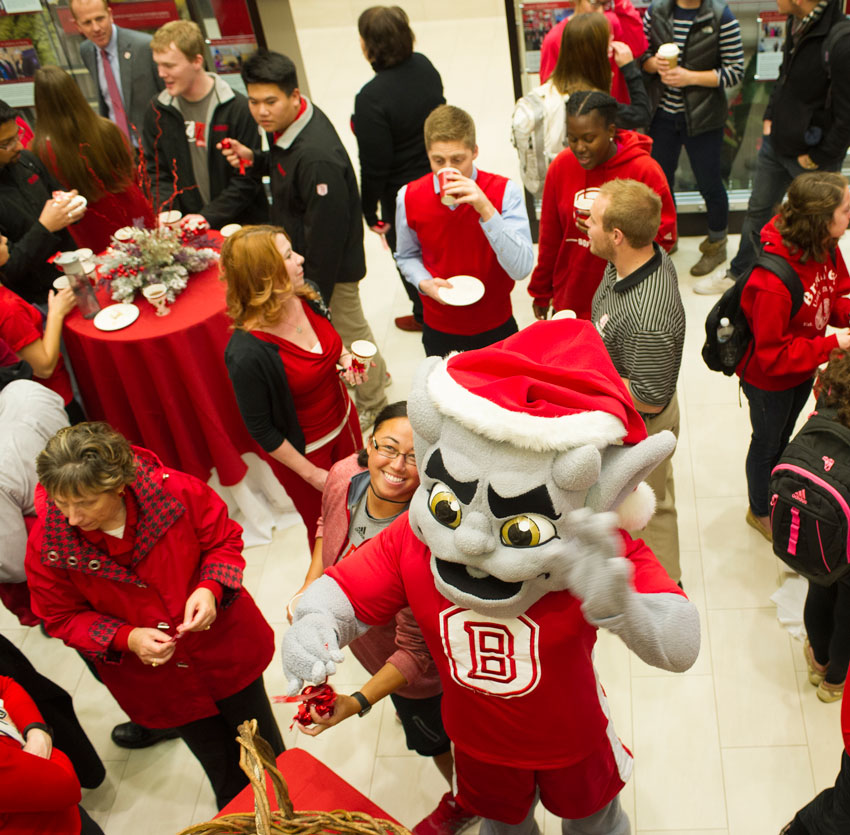Bradley is celebrating Homecoming Week in its 125th year and has provided a home on the Hilltop for hundreds of thousands of students. The university has endured countless events, opportunities, struggles, and changes since its inception in 1897 as a school centered around watchmaking.
In some ways, Bradley is very different from the institute it was in its infancy, but its philosophy has not changed. Today, Bradley offers over 100 fields of study, exemplifying the Braves’ tradition of constantly moving forward.
Since the university’s founding, there have been two World Wars, the Great Depression, the Civil Rights Movement, the birth of the internet age and many more events found in nearly every history textbook.
The timeline below puts the evolution of Bradley in perspective and lists intriguing events that you may remember fondly, or have never heard about. Even if you’re not a historian, Bradley’s background plays a large role in the present day’s sights and sounds of campus, whether it’s related to academics, athletics or campus life.
1837: Lydia Moss marries Thomas Bradley. The two move from Vevay, Indiana, to Peoria, Illinois, where they forge impressive careers in the financial sector and real estate.
1892: Lydia Moss Bradley purchases a controlling interest in Parsons Horological School, an institution specializing in watchmaking. Bradley moves the school from LaPorte, Indiana, to Peoria, Illinois, with plans that the university would come to fruition after her passing. Lydia was 76 years old at the time and had suffered through the loss of her husband and all six of her children.

1896: In October, Chicago-based academic leader William Rainey Harper Jr. encourages Lydia Moss Bradley to make her dream of building a college a reality during her lifetime. One month later, Bradley Polytechnic Institute was chartered. Lydia used 17.5 acres of land and sufficient funds to construct Bradley Hall and Horology Hall, which was renamed Westlake Hall in 1961.
1897: The first students arrive at Bradley Polytechnic Institute in the midst of the construction of the two buildings. A formal dedication of the school took place on Oct. 8 of that year.
1898: Cora Unland becomes the first graduate of Bradley Polytechnic institute. At the time, students could graduate after either two or four years at the school.
The year of firsts continue, with Bradley debuting its football team, first student organization in the Forum Literary Society, and fraternity, Alpha Pi. Decades later, the fraternity affiliated with Sigma Nu.
1908: On January 16, Lydia Moss Bradley passed away at the age of 91. Shortly thereafter, the Bradley Institute Gymnasium, later renamed Hewitt Gymnasium, was built after the school received financial help from Bradley’s estate. The gym was the home of Bradley’s men’s basketball team from its completion until 1949. The gym was the third-largest in the nation when it was completed and included a swimming pool, track, bowling alleys, pool tables and a space for social events on the third floor.
1920: Bradley begins offering four-year bachelor’s degrees.
1930: Constance Hall, originally a women’s dorm, is built in honor of English professor Jennie Meta Constance, who was murdered two years earlier.
1937: Bradley athletic teams officially begin using the nickname “Braves”.
1942: Army engineers use Bradley as a training site for World War II. Hewitt Gymnasium is used for Army barracks during this time.
1946: Bradley Polytechnic Institute begins offering graduate programs. The school is renamed Bradley University. Horology Hall was renamed to Westlake Hall.
1948: Bradley’s athletic teams join the Missouri Valley Conference. The Braves eventually left the MVC for a brief period in 1953 and 1954 before rejoining the conference in 1955.
1949: Robertson Memorial Fieldhouse is constructed from two Army surplus hangars and dedicated to longtime Bradley athletic director A.J. Robertson. The arena housed Bradley’s men’s basketball team until 1982 and the women’s basketball and volleyball teams until 2008.
1950: Bradley’s men’s basketball team reaches the NCAA Championship Game for the first time in school history, losing to City College of New York 71-68. The Braves also would repeat their national runner-up feat in 1954.
Bradley moved its library from the basement of Bradley Hall to the newly-built Cullom-Davis Library.
A new student center replaces the Teepee and the Wigwam as the primary spots to eat and socialize on campus.
1951: Bradley men’s basketball was in the news again, but not for the right reasons, as multiple players on the team admitted to accepting bribes from sports bettors. One of those players was Gene “Squeaky” Melchiorre, who was drafted with the first overall pick in the 1951 NBA Draft. Melchiorre never played a game in the NBA after receiving a lifetime ban due to the scandal.
1953: Construction finishes on Wyckoff Hall, which was originally built as an all-male dorm. The dorm is still in use and is named after Charles T. Wyckoff, who was Bradley’s interim president in 1925.
1955: Jobst Hall opens as the primary building for engineering and technology.
1956: Lovelace Hall (later renamed Baker Hall) is built to house dorms for female students. Lovelace Hall eventually became the name of one of the single-occupancy dorms at Bradley.
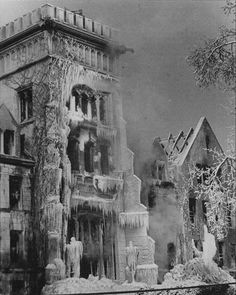
1957: The student center opens. Among the luxuries provided in the building are a color television, bowling alleys and a veranda.
1961: The college of horology, Bradley’s first offered major, is discontinued.
1962: Heitz Hall, which originally housed a cafeteria, finishes construction.
1963: Parts of Bradley Hall are destroyed by a fire during the winter. The cold weather combined with the water from firefighters’ hoses to give the building an ice castle-like appearance. Louis B. Neumiller pledged $75,000 for restoration efforts and has a lecture hall named after him to this day.
1966: Williams Hall is completed. The dorm is named after Bradley alumnus Herbert Lewis Williams and his wife, Annie.
1969: Olin Hall is built to house the department of sciences at Bradley after the Olin Foundation gave Bradley over $2 million.
Phones inside dorm rooms end the need for students to use pay phones at the end of the hall.
1970: On May 4, over 2,000 Bradley students converge for a march in protest of Ohio National Guardsmen killing four students at Kent State University. The march lasted into the wee hours of May 5 and drew significant news coverage.
Bradley’s football team plays its last season after the university decides to cut the team in order to save on funding. “The discontinuance is not an effort to de-emphasize the athletic program of the university, rather it is to provide a more solid financial basis for the other athletic programs at the university,” then-Bradley University President Dr. Martin Abegg said.
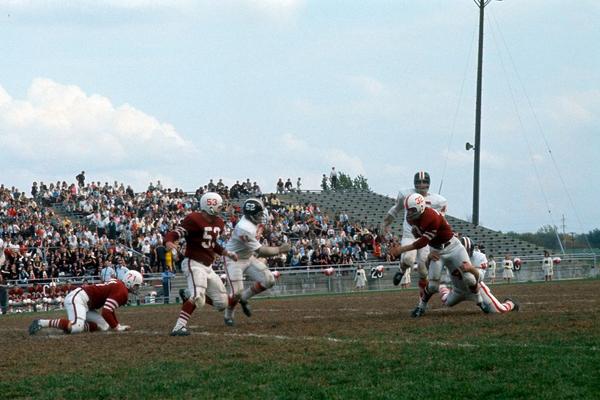
The same year, Geisert Hall was completed as the largest dorm building on Bradley’s campus. Charles Geisert, a local World War I veteran and florist, became the 11-floor building’s namesake after he gave his $400,000 estate to Bradley.
1972: Burgess Hall and Sisson Hall close as dormitories. Sisson Hall was named after Bradley’s first university president, Edward Sisson. The buildings are now used as administrative offices for Bradley and various student activities.
1973: With the legal drinking age for beer and wine at the time being 19, “The Wharf” opens in the student center and sells buckets of Pabst Blue Ribbon for $1.
1975: On Oct. 11, Johnny Cash performs at Robertson Memorial Fieldhouse. One year later, Gerald Ford visits the Fieldhouse as well.
1977: Romeo B. Garrett, Bradley’s first African-American professor, retires and the Garrett Center is dedicated to him. The building has since been a hub for diversity and inclusion on Bradley’s campus.
1978: The College of Health Sciences and College of Communication and Fine Arts are established at Bradley.
The Hewitt Gymnasium is officially converted into the present-day Hartmann Center for Performing Arts.
1982: The Braves men’s basketball team wins its fourth National Invitational Tournament (NIT) title in school history (previous championships were in 1957, 1960 and 1964). Only St. John’s University has won the tournament more times.
1983: Dingledine Music Center is purchased after the building formerly housed a church of Scientology.
Bradley introduces its students to a general education (G.E.) requirement of 36 credit hours from various disciplines.
1984: Bradley becomes one of just three universities in the country at the time to offer studies in mechanical engineering.
1986: Following a partnership with AT&T, computers and accompanying software are installed in 140 dorm rooms in Geisert Hall, which was dubbed “The Dorm of the Future.”
1988: Braves’ basketball star Hersey Hawkins leads the nation in points per game with 36.3 and scores a school record 63 points against Detroit on Feb. 22.
1989: Bradley changes their logo to a “B” with a Native American headdress surrounding the top of the letter. Students expressed outrage after not being included in the vote on what the new logo would be.
1990: Racial tensions and unrest on campus escalate after student Matt Hale puts up flyers advertising the American White Supremacy Party and members of the Ku Klux Klan appear on the corner of Elmwood and Main Street. Students Calvin Butler, James Fitzpatrick and Robert Davis helped form the Bradley Minority Coalition as a response. The group name was later changed to the Multicultural Awareness Coalition.
Becker Hall is built as a temporary dorm to house an overflow of students on the corner of Duryea Place and St. James Street. The university closes enrollment to prevent a further overflow of students.
1992: Bradley ceases using all Native American-related logos and imagery and begins using a bobcat as the university’s mascot.
1997: The statue of Lydia Moss Bradley is revealed in Founders Circle in honor of Bradley’s centennial celebration.
1999: The Caterpillar Global Communications Center is dedicated.
The student center is also dedicated after Congressman Robert H. Michel, who was born in Peoria.
2000: Bradley’s speech team wins their 19th national championship in 21 years. To date, it is one of the most, if not the most, successful college team in the country, athletic or non-athletic.
2001: The FBI comes to Peoria after Bradley graduate student Ali Saleh Kahlah al-Marri was named as a conspirator in the 9/11 attacks. al-Marri eventually pled guilty to one count of conspiracy to provide material support or resources to a foreign terrorist organization in 2009.
2006: Led by Marcellus Sommerville and Patrick O’Bryant, Bradley’s men’s basketball team reaches the Sweet Sixteen of the NCAA Tournament after winning against Kansas and Pittsburgh before ultimately falling to Memphis.
2007: Joanne Glasser is named Bradley’s first female president.
Danny Dahlquist, a sophomore on the Braves soccer team, tragically dies after other teammates play a prank involving fireworks that goes horribly wrong. The organizers of the prank are sentenced to jail time and dismissed from the team.
Later that year, good news came from the soccer team when head coach Jim DeRose’s squad pulled off an improbable run to the Elite Eight of the NCAA Tournament with wins over DePaul, Indiana and Maryland. The Braves surmounted a 2-0 deficit in the final three minutes against the latter, leading to the game being called “The Miracle in Maryland”.
2009: The state-of-the-art Markin Family Student Recreation Center opens after alumnus David Markin gifts Bradley $8 million. The gym features a saltwater swimming pool, rock-climbing wall and dance studios. Markin was also the president of the U.S. Tennis Association in 1989 and 1990, and Bradley’s tennis courts across the street from the Markin Center are named after him.
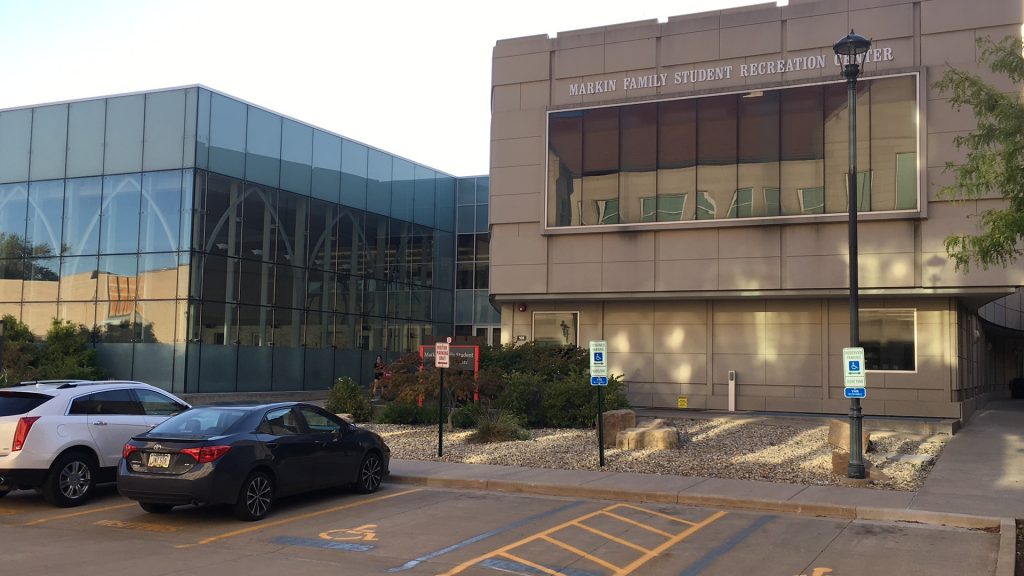
2010: Westlake Hall begins undergoing significant renovations while maintaining many of its original features. Following the renovations, Westlake earned gold certification from Leadership in Energy and Environmental Design (LEED).
Jay Leno performs at the brand-new Renaissance Coliseum for homecoming. The 4,200-seat arena stands in the same place that Robertson Memorial Fieldhouse did and plays home to Bradley’s women’s basketball and volleyball teams.
2012: Presidential candidate Mitt Romney visits Bradley one day before his win in the Illinois primary.
Alcohol is briefly prohibited from Greek Life events after misconduct at a party. After alumni threatened to pull back funding, Bradley Greek Life’s “prohibition” was ended.
2014: Kaboom! the gargoyle becomes Bradley’s official mascot. While some national media outlets said he looked terrifying, the ever-present and lovable creature was chosen in homage of the gargoyles atop the Hayden-Clark Alumni Center.
2018: Freshman biomedical science major Nasjay Murry is killed at an off-campus party. Jermontay Brock, who was unaffiliated with Bradley, was convicted of first-degree murder charges two years later.
The statue of Lydia Moss Bradley in Founders Circle is toppled after a car collides with it. Lydia underwent intensive repairs before returning atop her pedestal in 2019.
2019: The $10 million Business and Engineering Convergence Center (BECC) is opened, replacing Jobst Hall and Baker Hall as the main hub for students in the Foster College of Business and the Caterpillar College of Engineering and Technology. The facility is 270,000 square feet and hosts many state-of-the-art classrooms and labs.
